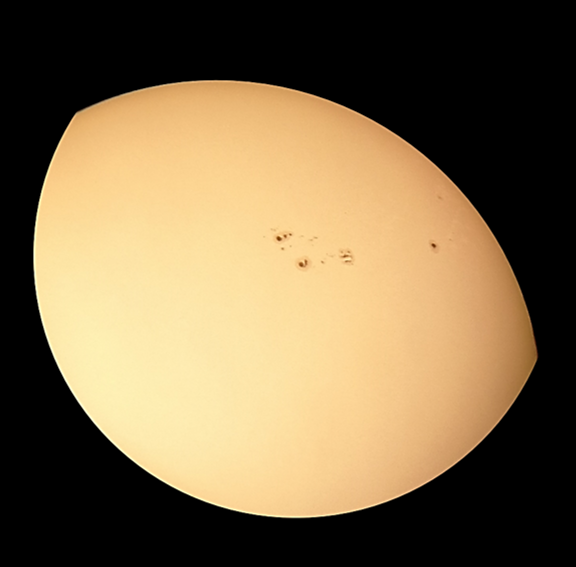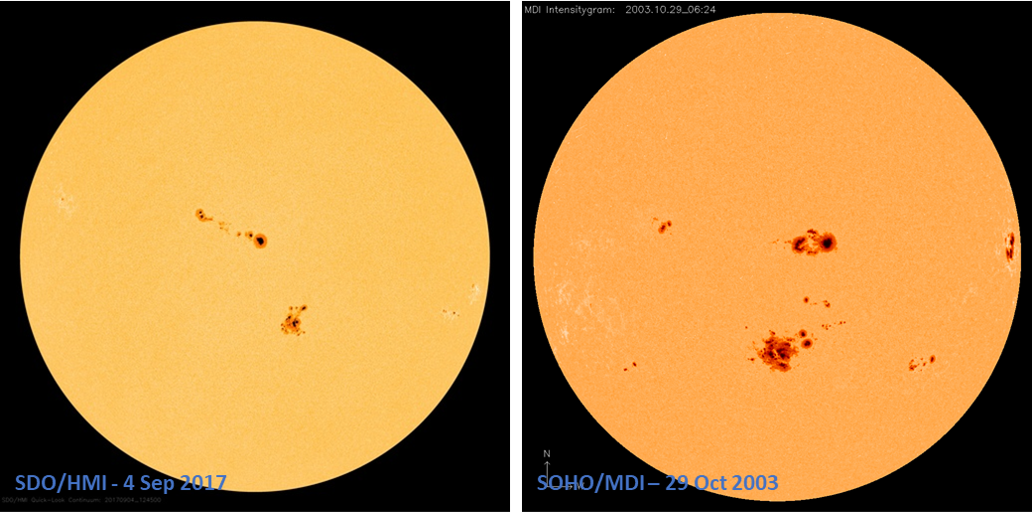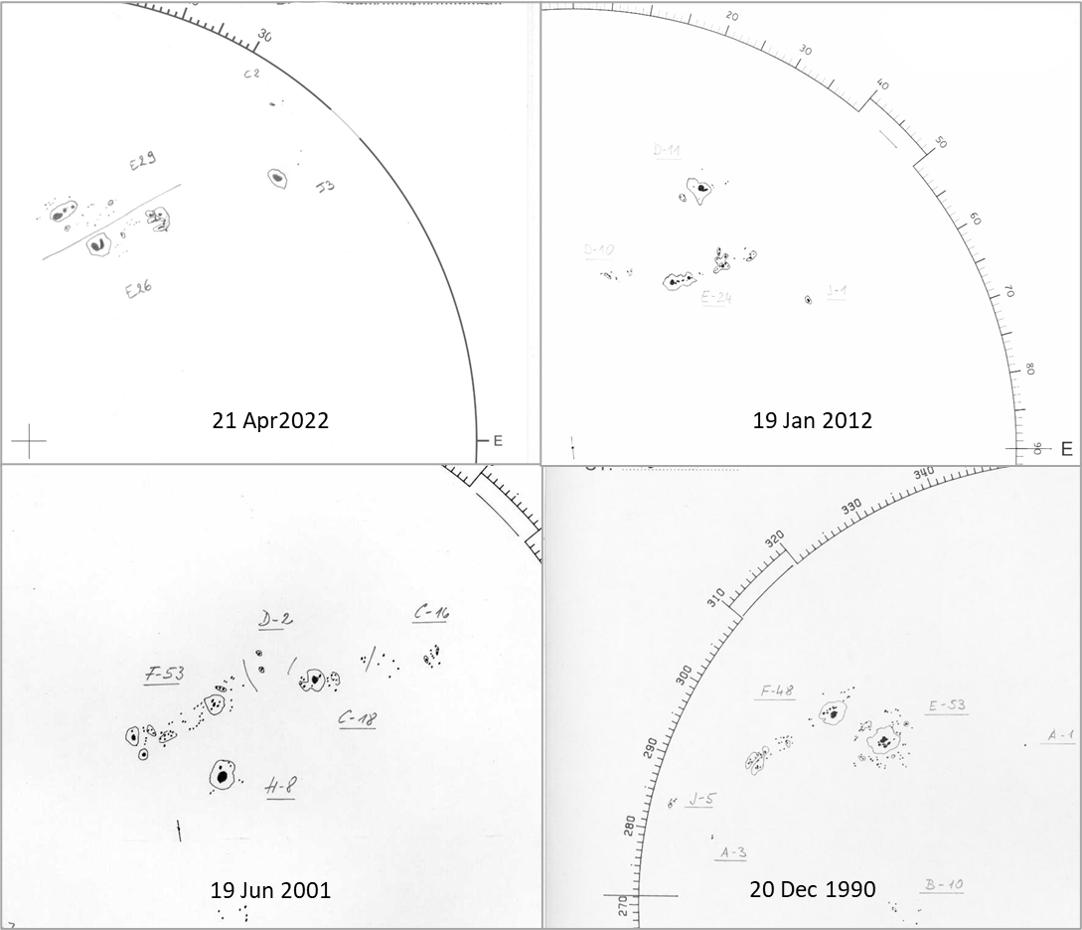The sunspot complex consisting of NOAA 12993 and 12994 has been dominating the solar disk over the last week. The regions have been very flare productive with more than 10 M-class flares and 1 X-class event so far. With still 1 week before rounding the Sun's west limb, it's likely there are some more M-class events in the pipeline.

The combination of 2 rather big sunspot groups only a few degrees in latitude from each other, in the same solar hemisphere, is quite rare. During the more active phase of a solar cycle, it is fairly common to have several big sunspot groups visible at the same time, but they are usually quite separated from each other or in opposite solar hemispheres. Some extreme examples are the September 2017 and October 2003 sunspot groups.

A quick check of sizeable sunspot groups over the last 3 solar cycles (SolarCycleScience) revealed that there are not many good lookalikes for NOAA 12993/94. Underneath is a compilation of ROB/USET and Kanzelhöhe drawings for sunspot groups with a similar morphology. The letters and numbers on these drawings represent the Waldmeier type and the number of sunspots for each of the sunspot regions (see the STCE's SWx classification page). There's a good ressemblance with NOAA 11401/11402 in January 2012, which were also prolific M- and X-class flare producers. For NOAA 9503/9504 in June 2001, and NOAA 6413/6415 in December 1990, the isolated spot is located to the south of the main group, but clearly still belonging to the same "family". These two pairs produced only M-class flares, and they were also the smallest of the 4 cases. Of note is that all 4 duos appeared in the northern hemisphere, but this may be due to the limited number of cases examined.






